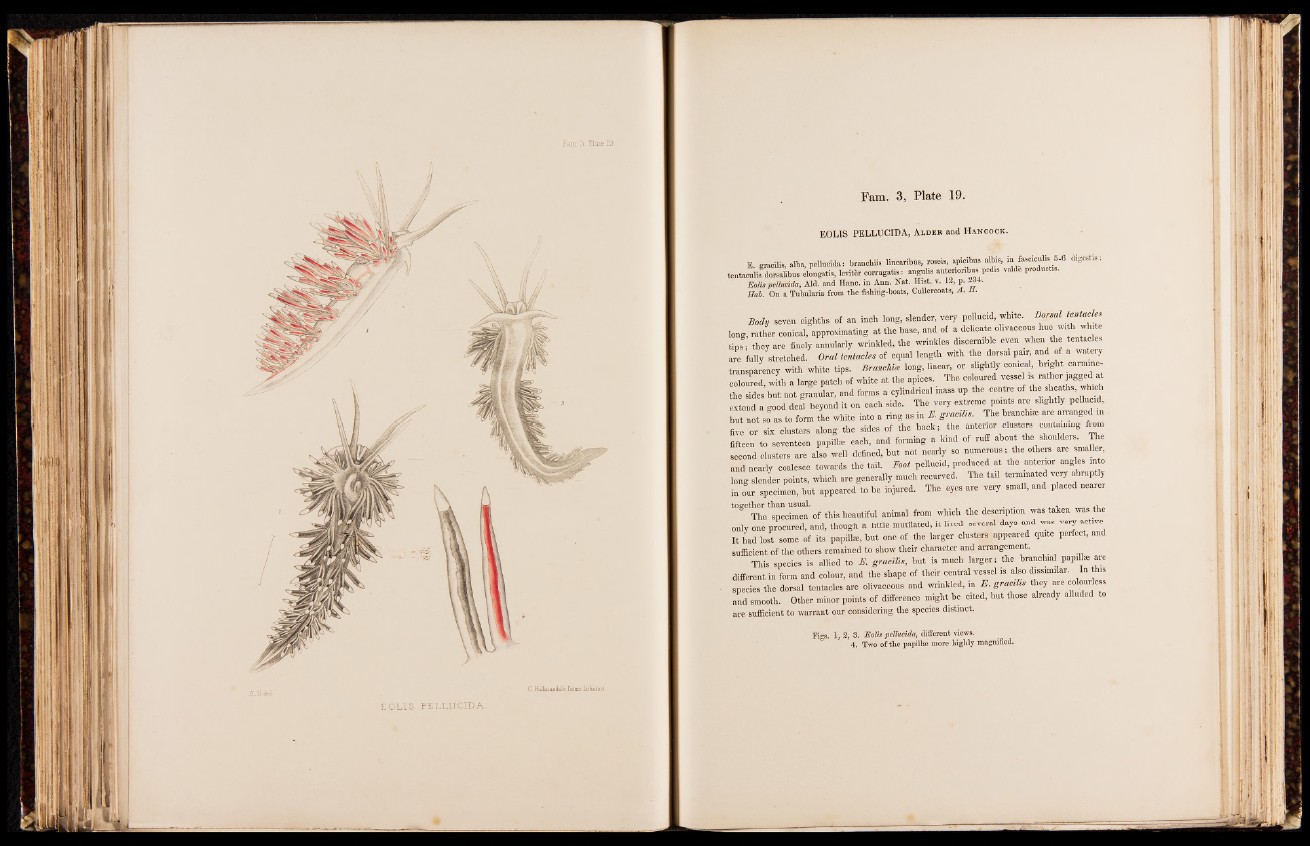
Fam. 3, Plate 19.
EOLIS PELLUCID A, Aldeh and H ancock.
E. gracilis, alba, pellucida: branches linearibus, rosbis, apicibus albis, in fesdcvdis B.A, digestis:
tentacubs dorsaUbus elongatis, leriter corrngatis: angnlis antenonbus pedis yaldb prodnctis.
Eolis pellucida, Aid. and Hanc. in Ann. Nat. Hist. v. 1 A, p. A6*.
Hab. On a Tubnlaria from the fishing-boats, Cullercoats, A. ti.
Body seven eighths of an inch long, slender, very pellucid, white, Dorsal tentacles
long, rather conical, approximating at the base, and of a delicate olivaceous hue wi h white
tips; they are finely annularly wrinkled, the wrinkles discernible even when the tentacles
are fully stretched. Oral tentacles of equal length with the dorsal pair and of a watery
transparency with white tips. Bronchi* long, linear, or slighfly conical, bnght carmme-
coloured, with a large patch of white at the apices. The coloured vessel is rather jagged at
the sides hut not granular, and forms a cylindrical mass up the centre of M H — j
extend a good deal beyond it on each side. The very extreme points are slightly pellucid,
but not so as to form the white into a ring as in S g ra c e s . The branch,m are arranged m
five or six clusters along the sides of the hack; the antermr clusters containing from
fifteen to seventeen papillae each, and forming a kind of ruff about the shoulders. The
second clusters are also well defined, hut ncfgpearly so numerous; the others are smaller,
and nearly coalesce towards the tail. Foot pellucid, produced at the anterior angles m o
long slender points, which are generally much recurved. The tail terminated very abruptly
in our specimen, hut appeared to he injured. The eyes are very small, and placed nearer
together than usual. , . . . ,
The specimen of this beautiful animal from which the description was taken was the
only one procured, and, though a little mutilated, it lived several days and was v e ij active
It had lost some of its papillse, hut one of the larger; clusters appeared quite perfect, and
sufficient of the others remained to show their character and arrangement.
This species is allied to B. gracilis, hut is much larger; the branchial papillse are
different in form and colour, and the shape « their central vessel is also dissimilar. In this
species the dorsal tentacles are olivaceous and wrinkled, in E . g ra p h s they are colourless
and smooth. Other minor points of difference might he cited, hut those already alluded to
FicrS. 1, 2, 3. Eolis pellucida, different views.
4. Two of the papillse more highly magnified.